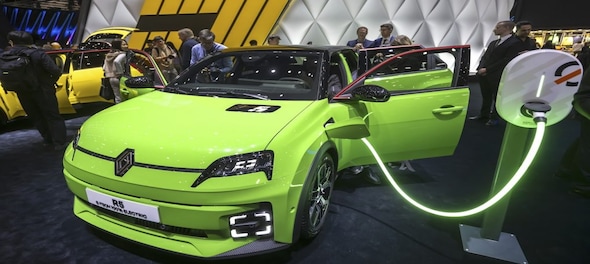
In a bold endeavour to position itself as a global manufacturing powerhouse for electric vehicles (EVs), government of India has launched an ambitious policy aimed at fostering domestic production. This strategic move underscores India's commitment to harnessing its manufacturing prowess to drive innovation, economic growth, and sustainable mobility solutions.
Bolstered by recent initiatives like the Auto PLI scheme EVs, FAME and PLI for Advanced Chemistry Cell (ACC), the nation is poised to carve out a significant presence in the burgeoning EV market.
India's Ascent As An EV Manufacturing Destination
Amidst a global push towards sustainable transportation, India has set its sights on becoming a premier destination for EV manufacturing. Recognising the transformative potential of electric mobility, the government has unveiled a comprehensive EV policy framework aimed at attracting investments, promoting domestic manufacturing, and fostering innovation in the sector.
EV Policy: Driving the Transition To Electric Mobility
The newly introduced EV policy outlines several key tenets aimed at accelerating the transition to electric mobility in India. These include:
Driving Down Costs: Catalyst for Consumer Adoption
Central to India's ambition of becoming an EV manufacturing hub is the imperative to drive down the costs of electric vehicles, making them more affordable and accessible to consumers.
The newly introduced policy offers a range of incentives, including reduced customs duties and import limits tied to investment commitments, to entice global manufacturers to establish production facilities within the country.
Affordability for All: Empowering Commercial and Private Users
For commercial entities, the affordability of EVs translates into tangible cost savings and enhanced operational efficiency. With lower operating costs and reduced dependence on fossil fuels, electric fleets offer a compelling value proposition for businesses seeking to optimise their transportation operations while minimising environmental impact.
Similarly, for private consumers, the prospect of owning an EV becomes increasingly feasible with the anticipated reduction in purchase prices. As India strengthens its position as an EV manufacturing hub, the broader availability and affordability of electric vehicles are poised to accelerate the transition towards sustainable mobility solutions.
What should consumers do?
For consumers contemplating the purchase of an EV in near future, it's crucial to acknowledge that the effects of the new policy won't manifest overnight. If one is to buy a high-end EV in near future, it's unlikely to notice a significant difference in price. However, if one is flexible in purchase timeline, waiting for few additional months could prove beneficial.
By delaying purchase, one may benefit from potential price drops, which depending on market dynamics and competitive pressures, could also be substantial in high-end EVs. Thus, while immediate savings may not be substantial, consumers can maximise their value proposition by strategically timing their EV purchase.
Conclusion
India's endeavour to become an EV manufacturing hub heralds a new chapter in the nation's industrial evolution, characterised by innovation, sustainability, and economic resilience. By incentivizing domestic production, reducing import barriers, and prioritising affordability, the government's EV policy empowers consumers and businesses alike to embrace electric mobility with confidence. As India cements its position as a manufacturing powerhouse for EVs, the benefits of this strategic initiative are poised to extend beyond its borders, shaping the future of mobility on a global scale.
—The authors; Saurabh Agarwal and Bhavesh Ahuja, are Partner and Director respectively at consultancy firm EY. The views expressed are their personal.
(Edited by : C H Unnikrishnan)
First Published: Mar 20, 2024 11:13 AM IST
Check out our in-depth Market Coverage, Business News & get real-time Stock Market Updates on CNBC-TV18. Also, Watch our channels CNBC-TV18, CNBC Awaaz and CNBC Bajar Live on-the-go!


BJP's Hindi heartland dominance faces test in phase 3 polls
May 2, 2024 9:14 PM
Lok Sabha Election: Re-elections at a Ajmer booth after presiding officer misplaces register of voters
May 2, 2024 4:54 PM

